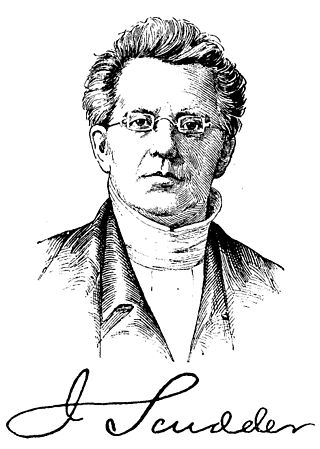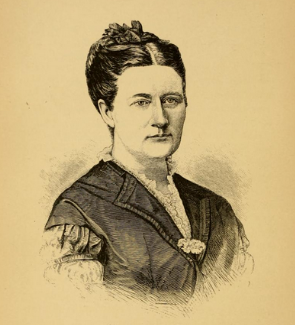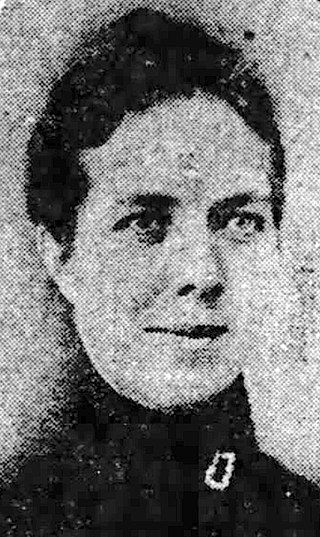
Raheny is a northern suburb of Dublin, Ireland, halfway from the city centre to Howth. It is centred on a historic settlement, first documented in 570 AD. The district shares Dublin's two largest municipal parks, Saint Anne's Park and Bull Island with its 4.5 km beach, with neighbouring Clontarf, and is crossed by several small watercourses.

The Franciscan Missionaries of Mary are a Roman Catholic centralized religious institute of consecrated life of Pontifical Right for women founded by Mother Mary of the Passion at Ootacamund, then British India, in 1877. The missionaries form an international religious congregation of women representing 79 nationalities spread over 74 countries on five continents.
Sister Dr. Mona Tyndall was a medical doctor and Roman Catholic missionary in Nigeria and Zambia. She was one of the six children of businessman David P. Tyndall and his wife, Sarah Gaynor Tyndall.
United Society Partners in the Gospel (USPG) is a United Kingdom-based charitable organization.

St. Assam's is the name of two historic churches in the village of Raheny, Dublin, one a ruin in the middle of the village, one the structurally sound but no longer primary church built for the local Roman Catholic community of the area after the revival of religious rights. Both buildings lie within the area of the ráth which gave the village and district its name, and which was perhaps 110 m across.

Members of the Scudder family have worked as medical missionaries in South India.

Agnes McLaren FRCPI was a respected Scottish doctor who was one of the first to give medical assistance to women in India who, because of custom, were unable to access medical help from male doctors. Agnes was active in social justice causes including protests against the white slave trade. She signed the 1866 women's suffrage petition and was secretary of the Edinburgh National Society for Women's Suffrage alongside her stepmother, Priscilla Bright McLaren. In 1873 she travelled with Priscilla and Jane Taylour to give suffrage lectures in Orkney and Shetland. Her father had supported the campaign of first women who sought to study medicine at University of Edinburgh and Agnes became friends with Sophia Jex-Blake, one of the Edinburgh Seven. Her father did not however, support Agnes' own ambitions in this area. And as she could not graduate in medicine in Scotland, she went to study in France and later, in order to be permitted to practice at home, became a member of the Royal College of Dublin.
Hilda Mary Lazarus CBE, MStJ, MRCS, FRCSE was a Christian missionary and popular gynecologist and obstetrician in India. She was Principal of Andhra Medical College and Superintendent of King George Hospital at Visakhapatnam. She was also the first Indian director of Christian Medical College and Hospital at Vellore.

Clara A. Swain was an American physician and Christian missionary of the Methodist Episcopal Church. She has been called the "pioneer woman physician in India," and as well as the "first fully accredited woman physician ever sent out by any missionary society into any part of the Non-Christian world". Her call to service in India fell from a need to have a female physician provide quality medical care to high-caste women, that were religiously secluded to zenana. Supported by the Woman's Foreign Missionary Society of the Methodist Episcopal Church, Swain left the United States in 1869, for Bareilly, India, where she spent the next twenty-seven years of her life treating women and children from illnesses, while simultaneously working to evangelize natives.
Sarah "Sally" Christine Wolfe was a medical missionary who served in China from 1915 to 1951, despite working amidst much political turmoil. She came from a strong Methodist family and upon leaving Ireland, became part of the Methodist Missionary Society. When she arrived in China, Wolfe joined the Jubilee Women's hospital at the Wesleyan Mission in Hankow, where she worked among other European missionaries and ran Bible classes for women and children. Wolfe's time in China was marked by much political strife, as she arrived four years after the Chinese Revolution of 1911 and witnessed the Chinese Civil War, which began in 1927. In 1951, after serving the Chinese people for nearly forty years, Sally Wolfe left China due to strong xenophobia towards foreign missionaries and conflict between Communists and the Kuomintang.
The Delhi Female Medical Mission (DFMM) was a medical mission in Delhi, India that was founded in the mid-19th century by an Indian-born Englishwoman named Priscilla Winter. The organization started as a dispensary along the Yamuna River in Delhi, but over time developed into a mission, which was then established as St. Stephen's Hospital for Women and Children, a hospital that remains in operation today.

The Cambridge Mission to Delhi was an Anglican Christian missionary initiative to India in the mid 19th and early 20th centuries led by graduates of the University of Cambridge. Individual members of the mission community are credited with helping to establish St. Stephens's College, a constituent College of the current University of Delhi, for social reform initiatives, and for providing support in the later years of the Indian independence movement.
Lucy Oommen was an Indian gynaecologist and the first medical director of Indian origin at the St Stephen's Hospital, Delhi. Born to P. K. Oommen and Kochannamma and sister to Jacob Oommen and Alice, in the south Indian state of Kerala, she graduated in medicine from the Christian Medical College and Hospital, Vellore and joined St Stephen's Hospital Delhi as a surgeon in 1942. She then took charge as superintendent from Dr. Morris.
Winifred Heston, M.D., was a Presbyterian medical missionary who worked in India with the Foreign Missionary Society of the Presbyterian Church in the U.S.A. Heston attended medical school at Laura Memorial Women’s Medical College of Cincinnati and was an associate physician at the General Hospital in Miraj, India, from 1903 to 1907. She performed over five hundred surgical operations during her service in Miraj.

Victoria Coffey graduated from the Royal College of Surgeons in Ireland and became a paediatrician, and later one of the first people to research sudden infant death syndrome (SIDS) and one of the first females to undertake significant research into congenital abnormalities. She also became the first female president of the Irish Paediatric Association, the paediatric section of the Royal Academy of Medicine in Ireland, the Royal College of Surgeons of Ireland (RCSI) Post-graduate Association, and the Irish American Pediatric Association. Coffey was also the first female recipient of the RCSI Distinguished Graduate medal.
Eva Josephine Jellett, doctor, was the first woman to graduate in medicine from Dublin University.

St Stephen's Hospital Delhi is one of the oldest and the largest private hospitals in New Delhi, India. The hospital today has 600 beds and is presently a superspeciality tertiary care hospital offering comprehensive care covering all major clinical specialities and most super-specialities. The institution started as a dispensary in 1876 by the Delhi Female Medical Mission, on the banks of river Yamuna. The hospital was later established in 1885 as a small facility with 50 beds in Chandni Chowk and opened by Lady Dufferin, Vicereine of India. It was the first hospital for women and children.
Sister Mary de Lourdes Gogan was an Irish Medical Missionaries of Mary nun and missionary nurse in Nigeria.

Mary Alice Fish Moffett was an American Presbyterian medical missionary in Korea, with her husband Samuel A. Moffett.

Eileen Rae Niedfield (1920–2007), in religious life Sr. Mary Frederic Niedfield, MMS, MD, FACS was a surgeon and general physician in India for nearly 40 years, two in Bhutan. She was notable for being in the first cohort of Georgetown University Medical School graduates that included women. She was valedictorian, and received the highest national board grades in pathology in the United States. Some students have called for the university to name a medical pavilion after her.












